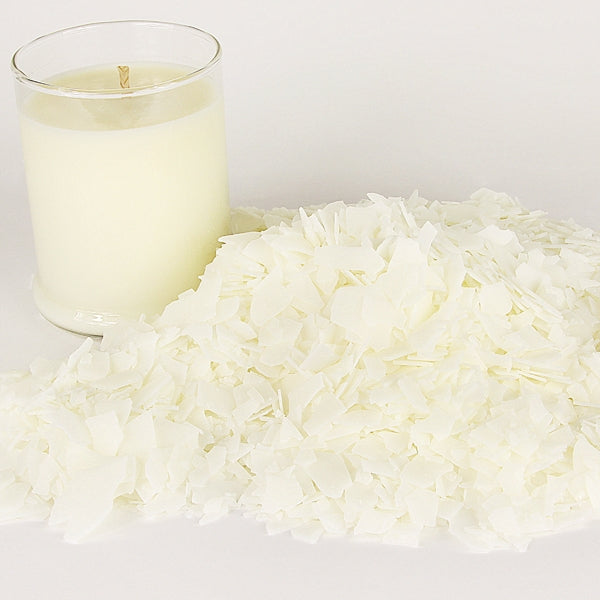Explore the Globe of Crystal Soy Candles and Home Fragrance Delights
Explore the Globe of Crystal Soy Candles and Home Fragrance Delights
Blog Article
From Wick to Wax: Understanding the Chemistry Behind Soy Wax Candles and Their Ecological Effect
As we brighten our rooms with the warm radiance of candle lights, there lies a realm of detailed chemistry behind the apparently basic act of lighting a soy wax candle. The option in between soy and paraffin wax prolongs beyond mere appearances, diving right into the world of ecological effect and the really composition of the materials. Comprehending the molecular structure of soy wax and its burning procedure loses light on the emissions launched right into our surroundings. Join us as we unwind the clinical details behind soy wax candles and explore their effects on our environment.
Soy Wax Vs. Paraffin Wax
When comparing soy wax and paraffin wax for candle light making, it is necessary to recognize the unique characteristics and benefits of each product. Soy wax is a natural, renewable resource derived from soybean oil, making it eco-friendly and environment-friendly - crystal soy candles. On the other hand, paraffin wax is a byproduct of petroleum refining, which raises issues concerning its ecological impact and sustainability
Soy wax candle lights shed cleaner and produce much less soot contrasted to paraffin wax candle lights, making them a much healthier choice for interior air high quality. Additionally, soy wax has a reduced melting factor, enabling a longer-lasting candle light that distributes fragrance more properly. Paraffin wax, on the other hand, tends to burn faster and less easily, possibly releasing damaging chemicals right into the air.
From a sustainability viewpoint, soy wax is preferred for its biodegradability and eco-friendly sourcing, lining up with the growing customer preference for ecologically mindful products. While paraffin wax has actually been a conventional choice in candle light making as a result of its affordability and ease of use, the shift towards green choices like soy wax is getting momentum in the market.
Chemical Structure of Soy Wax

Burning Process in Soy Candles
The chemical structure of soy wax directly influences the burning procedure in soy candle lights, affecting factors such as melt time, scent launch, and ecological impact. When a soy candle is lit, the warm from the fire melts the wax near the wick. This liquid wax is after that drawn up the wick as a result of capillary activity. As the liquid wax reaches the flame, it evaporates and undergoes combustion. The combustion process includes the vaporized hydrocarbons in the wax reacting with oxygen in the air to create warmth, light, water vapor, and co2.
The burning efficiency of soy candles is influenced by the purity of the soy wax and the her latest blog high quality of the wick. A clean-burning soy candle light with an effectively sized wick will certainly lessen and create a constant fire soot development. This not just extends the burn time of find more info the candle however also boosts the release of scents. Additionally, soy wax candles have a reduced ecological influence contrasted to paraffin candle lights because of their renewable and eco-friendly nature.

Ecological Benefits of Soy Wax

Thought about a sustainable option to traditional paraffin wax, soy wax provides notable environmental advantages that make it a popular selection among eco-conscious consumers. Soy wax burns cleaner and generates less soot than paraffin wax, adding to far better interior air top quality and reducing the requirement for cleansing and upkeep. On the whole, the ecological advantages of soy wax align with the growing demand for sustainable and green products in the market.
Recycling and Disposal Considerations
Recycling and proper disposal of soy wax candle lights play a vital role in preserving ecological sustainability and minimizing waste in communities and families. When it comes to recycling soy wax candle lights, the first action is to make sure that the candle light has actually shed totally.

In terms of disposal, if recycling is not an alternative, soy wax candle lights are biodegradable and can be safely taken care of in many home waste systems. It is always suggested to examine with local recycling facilities or waste monitoring services for details guidelines on candle disposal to guarantee appropriate handling and ecological defense.
Verdict
In conclusion, the chemistry behind soy wax candle lights reveals their ecological advantages over paraffin wax candles. Soy wax, obtained from soybean oil, burns cleaner and produces much read more less soot when contrasted to paraffin wax.
When comparing soy wax and paraffin wax for candle production, it is crucial to recognize the unique attributes and benefits of each product (soy candles).Soy wax candles shed cleaner and give off less residue contrasted to paraffin wax candles, making them a much healthier selection for interior air top quality.Taken into consideration a lasting choice to conventional paraffin wax, soy wax uses notable environmental advantages that make it a prominent choice amongst eco-conscious consumers. Soy wax burns cleaner and produces less soot than paraffin wax, contributing to much better interior air quality and minimizing the need for cleaning and upkeep.In final thought, the chemistry behind soy wax candle lights exposes their environmental benefits over paraffin wax candle lights
Report this page